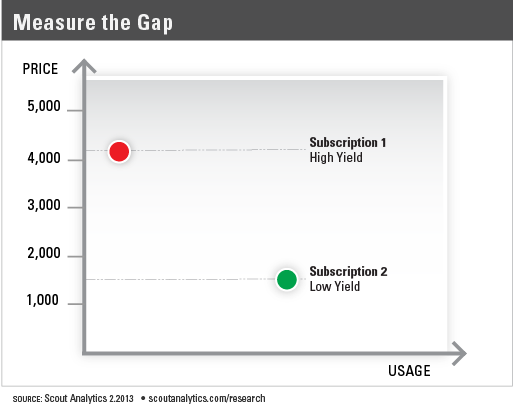Goals for revenue growth change over the lifecycle of a company, in both magnitude and composition: Early stage startups want 100 percent growth or more. Late stage startups aim for 60 to 80 percent growth. Companies near the public offering stage are in the 40 percent range. For public companies, growth objectives start to fall below 20 percent. As companies mature, growth begins to blend new customer acquisition with existing customer upgrade and add-on sales—and for the best-performing companies, an increasing percentage of growth comes from existing customers, year over year. In fact, for these best-performing companies, our research shows a direct correlation between average customer lifetime and percentage growth contribution from existing customers. To better understand this dynamic, consider […]
Mind the Gap: Avoiding Revenue Pitfalls in the Subscription Economy

In the book “Consumption Economics,” the authors describe a phenomenon called the “consumption gap” which is essentially the difference between a product’s capability and what a customer actually uses. The authors point out that this consumption gap will be a catalyst for technology business failures in the Subscription Economy. But how does a company know if they have a consumption gap? How do they quantify it? And how do they avoid revenue churn because of the gap? Step 1: Measure the Gap To evaluate if you have a consumption gap, you need to measure and quantify it. That means you need to take inventory on your product’s capabilities and how much a particular customer uses them. For offering, the most […]
How to Calculate the Breakeven Point for Digital Subscriptions
In subscription-based business models, maximizing customer lifetime value is understood to be a key success factor to a profitable business. But how do you know at what point a customer relationship turns profitable? While there are obvious differences between customers, it turns out you can calculate your average customer lifetime to reach the breakeven point using your existing operating metrics. So how is this done? Here are the standard operational metrics known by every online service: Customer Acquisition Ratio (CACR) – the sales and marketing costs to sign up a new customer as a ratio to revenue acquired Customer Renewal Cost ratio (CRCR) – the sales and marketing costs of closing a renewal as a ratio to revenue renewed Research […]
Why Data Trumps Experience in Trial Conversions
Probably one of the biggest mistakes publishers can make on converting trials is relying on experience and intuition. The art of implementing and managing trials doesn’t match the science of new data-driven techniques. Using predictive analytics to qualify trial users and focus on those that are most likely to convert can double conversion rates. In a 2012 study, the Aberdeen Group published a finding that companies using predictive analytics have a 73% sales lift versus companies that did not. In a previous note on trials, loyalty was described as a good measure for predicting conversions. This post expands on the loyalty measure to demonstrate how to implement trials scoring that increases conversions. Trial users can be measured and scored any […]
Subscribe

